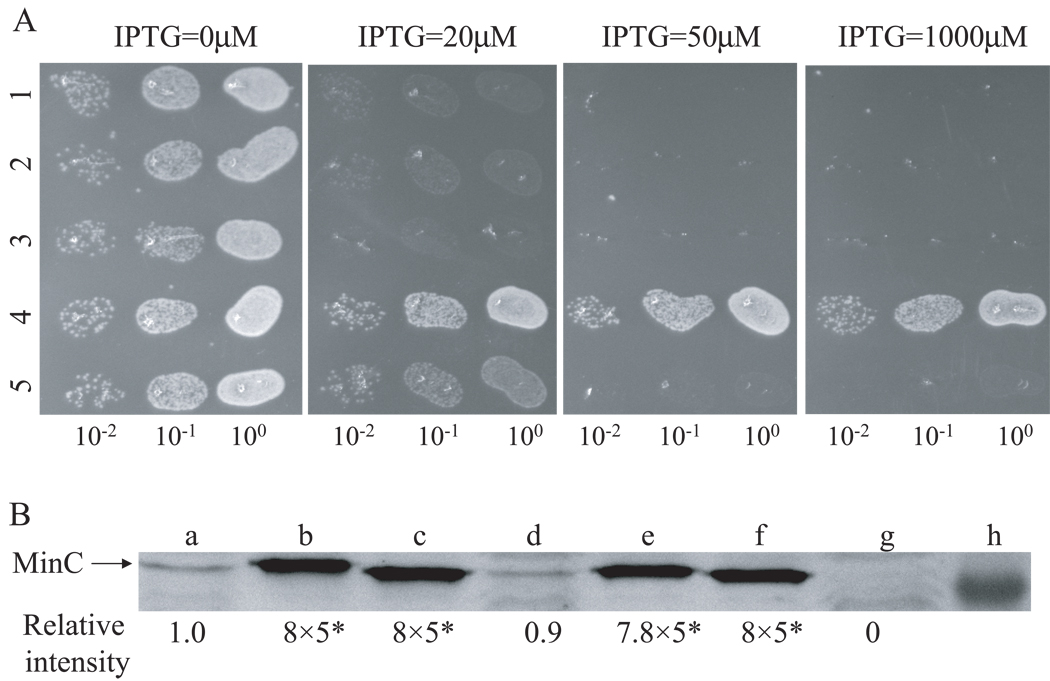Fig. 6.
Comparison of the killing efficiency of MinC/MinD and its mutants in FtsZ-WT and FtsZ-I374V strains. A) Plasmids pBANG78 (Plac∷minCD), pBANG78-G10D (minC-G10D on pBANG78) or pBANG78-R172A (minC-R172A on pBANG78) was transformed into S4 (min∷kan) or BSM374 (ftsZ-I374V, min∷kan). A spot test was done following the protocol described in Fig. 2 with the following samples: Row 1: S4/pBANG78-G10D; 2: S4/pBANG78-R172A; 3: BSM374/pBANG78; 4: BSM374/pBANG78-G10D; 5: BSM374/pBANG78-R172A. B) The minimal amount of MinC or MinC mutant proteins to cause uniform filamentation in S4 and BSM374 strains. Plasmid pBANG78 (pBANG59/Ptac∷minCD in the case of sample d) and its derivatives containing the minC-G10D or minC-R172A mutations were induced with minimal concentrations of IPTG to cause uniform filamentation in the indicated strains in liquid culture. The MinC protein level was determined by immunoblot with the WT strain S3 and Δmin strain S4 as controls: a: S3; b: S4/pBANG78-G10D; c: S4/pBANG78-R172A; d: S4/pBANG59; e: BSM374/pBANG78; f: BSM374/pBANG78-R172A; g: S4 and h: Marker at 28.8KD. The relative protein levels were indicated. *Loading volume for samples a, d and g was 5 fold more than that of samples b, c, e and f (see Experimental Procedures).

